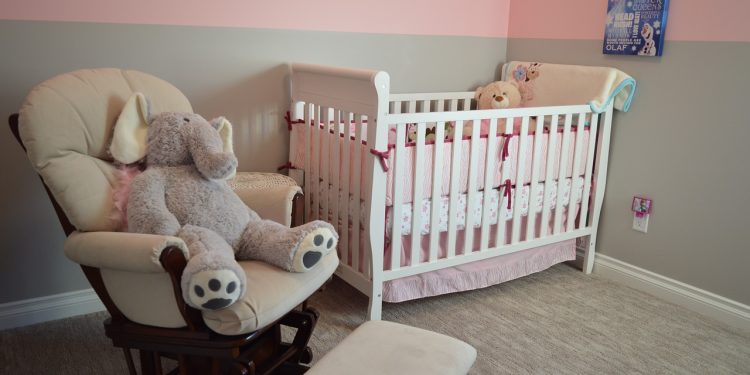Bringing a baby into your home is one of the most exciting and transformative experiences you’ll ever have. As a parent, ensuring your home is safe for your little one is a top priority, and it’s important to take proactive steps to create a secure environment where your baby can thrive. Babies are naturally curious, and as they grow and become more mobile, they will want to explore every corner of your home. Creating a safe space that supports your baby’s growth and curiosity while minimizing potential hazards will help you feel more at ease. In this guide, we will explore key ways to create a safe home environment for your baby.
1. Babyproofing Basics: Start Early
The best time to start babyproofing is before your baby becomes mobile, which can happen earlier than you expect. Around six months, babies start to roll over, crawl, and pull themselves up, which means it’s time to make sure your home is free of hazards. Babyproofing your home involves identifying potential dangers and taking steps to minimize or eliminate them.
Begin by getting down on your hands and knees to see your home from your baby’s perspective. Look for sharp corners, electrical outlets, loose cords, and small objects that could be choking hazards. Use outlet covers to prevent your baby from inserting objects into electrical sockets, and secure any loose cords to keep them out of reach. Install corner protectors on furniture with sharp edges, and make sure small objects, such as coins or buttons, are safely stored away.
2. Secure Furniture and Heavy Items
Babies love to pull themselves up on furniture as they learn to stand and walk. To prevent accidents, it’s crucial to secure heavy furniture, such as bookshelves, dressers, and TVs, to the wall using anti-tip straps or anchors. Babies are naturally inclined to grab onto anything they can reach, and unsecured furniture can easily tip over, posing a serious risk of injury.
In addition to securing furniture, make sure that heavy or breakable items are kept out of reach. Avoid placing items like picture frames, lamps, or potted plants on low tables where your baby can grab them. Instead, keep these items on high shelves or in areas that are off-limits to your baby.
3. Create a Safe Sleep Environment
Your baby will spend a significant amount of time sleeping, especially in the early months, so creating a safe sleep environment is essential. Use a crib or bassinet that meets current safety standards, and make sure the mattress is firm and fits snugly within the crib. Avoid using soft bedding, pillows, blankets, or stuffed animals in the crib, as these can increase the risk of Sudden Infant Death Syndrome (SIDS).
Instead, dress your baby in a wearable blanket or sleep sack to keep them warm without the need for loose bedding. Make sure the crib is placed away from windows, curtains, and cords to prevent any risk of entanglement or strangulation. It’s also a good idea to use a baby monitor to keep an eye on your baby while they’re sleeping, especially if their nursery is in a separate room.
4. Safety in the Kitchen
The kitchen is one of the most hazardous areas in the home for babies, and extra precautions are needed to keep your little one safe. Use safety gates to prevent your baby from entering the kitchen when you’re cooking, and always keep hot foods, drinks, and sharp objects out of reach. Use the back burners of the stove whenever possible, and turn pot handles inward so they can’t be pulled down by curious little hands.
Keep cleaning supplies, detergents, and other chemicals in a locked cabinet or out of reach. Even seemingly harmless items, like dish soap, can be dangerous if ingested. Consider installing cabinet locks to prevent your baby from accessing cabinets and drawers that contain potentially harmful items.
5. Bathroom Safety
Bathrooms are full of potential hazards, from slippery surfaces to cleaning products. Always keep the bathroom door closed when not in use, and consider installing a latch that’s out of reach of your baby. Use non-slip mats in the bathtub and on the bathroom floor to prevent slips and falls, and never leave your baby unattended in the bath, even for a moment.
Store all medications, toiletries, and cleaning products in locked cabinets. Toilets can also pose a danger, so consider using a toilet lock to keep the lid closed. When bathing your baby, always test the water temperature with your wrist or elbow to ensure it’s not too hot—aim for a temperature of around 100°F (37°C) to avoid burns.
6. Safety Gates and Play Areas
Safety gates are an essential tool for keeping your baby away from areas that may not be safe, such as staircases or rooms with many hazards. Install safety gates at the top and bottom of stairs, and make sure they are securely mounted. Pressure-mounted gates are suitable for blocking doorways, but hardware-mounted gates are recommended for staircases, as they provide more security.
Creating a designated play area for your baby is a great way to encourage exploration in a safe environment. Use a playpen or set up a gated area where your baby can play with toys without the risk of encountering hazards. Make sure the play area is free of small objects, choking hazards, and anything that could potentially harm your baby.
7. Electrical Safety
Electrical outlets and cords are particularly enticing to babies, and it’s important to take steps to minimize the risk of electrical hazards. Use outlet covers or safety plugs to prevent your baby from inserting objects into outlets, and keep electrical cords out of reach. Avoid overloading outlets, and replace any frayed or damaged cords immediately.
If you have floor lamps or other electrical devices that could be easily pulled down, make sure they are secured and out of reach. Cordless window blinds are a safer option, as cords can pose a strangulation hazard. If you have blinds with cords, use cord cleats to keep them wound up and out of reach.
8. Preventing Choking Hazards
Babies explore the world by putting objects in their mouths, which means that choking hazards are a constant concern. To prevent choking, make sure that small objects, such as coins, buttons, and beads, are kept out of reach. Be mindful of toys with small parts, and always follow the age recommendations on toy packaging.
When introducing solid foods, make sure that foods are cut into small, manageable pieces, and avoid giving your baby hard foods, such as whole grapes, nuts, or popcorn, which can easily become lodged in their throat. Always supervise your baby during mealtimes, and encourage them to sit upright while eating.
9. Keep Dangerous Substances Out of Reach
Household cleaning products, medications, and other chemicals should always be stored in locked cabinets or out of reach of your baby. Even products that seem harmless can be dangerous if ingested, so it’s important to take extra precautions. Consider using childproof locks on cabinets that contain potentially harmful substances, and store medications in their original containers with child-resistant caps.
If you have houseplants, make sure they are non-toxic, as some plants can be harmful if ingested. Keep plants out of reach or consider removing them from your home altogether if they pose a risk to your baby.
Conclusion: A Safe Space for Your Baby to Grow
Creating a safe home environment for your baby is an ongoing process that requires vigilance and proactive planning. By babyproofing your home, securing furniture, and taking steps to eliminate hazards in each room, you can create a space where your baby can explore and grow safely. Remember, your baby’s curiosity is a natural part of their development, and it’s up to you to provide an environment that supports their exploration while keeping them out of harm’s way.
Taking the time to create a safe environment not only protects your baby from accidents but also gives you peace of mind, allowing you to enjoy every precious moment with your little one. As your baby grows and their abilities change, continue to reassess your home for potential hazards, and make adjustments as needed. With the right precautions in place, you can create a nurturing and secure space where your baby can thrive.












